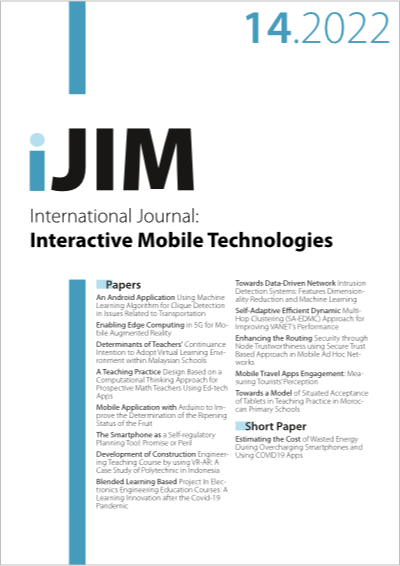Enabling Edge Computing in 5G for Mobile Augmented Reality
DOI:
https://doi.org/10.3991/ijim.v16i14.32623Keywords:
MAR, AR, 5G, edge computing, bandwidth limitation, latency.Abstract
Mobile Augmented Reality is scoring more reputation due to the progression in the clever smartphones that include characteristics and hardware needs for integrating AR. MAR offers an exclusive knowledge in which the physical world is enhanced by virtual remarks. It also incorporates computationally intensive techniques that might be divested to edge servers on 5G systems, improving MAR by reducing communication latency and ensuring more robust network links, resulting in unified mobile augmented reality user experiences. Edge computing is one of the probable 5G technologies that could deliver content and processing resources familiar to the users, lowering latency and backhaul load. We presented a MAR structure situated on a 5G edge computing and latency results. Offer higher bandwidth while edge servers completely scale down the network restrictions to reduce the bandwidth severity of the network by operating closer to the user. This paper aims to address the 5G edge computing arrangement to aid consistent MAR and finding protocol for enhanced quality of experience (QoE) for MAR applications.
Downloads
Published
How to Cite
Issue
Section
License
Copyright (c) 2022 Mazri, Anas A. Salameh, Othman Mohamed, Mohd Asrul Hery Ibrahim

This work is licensed under a Creative Commons Attribution 4.0 International License.



